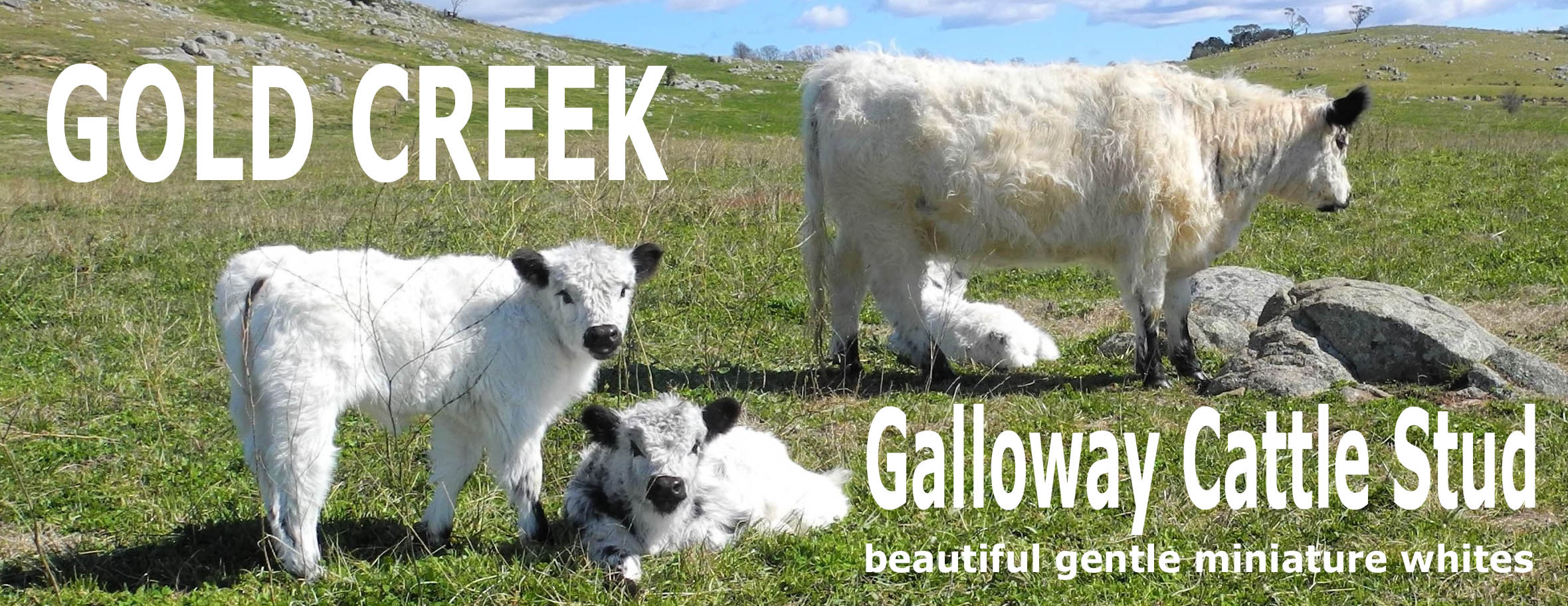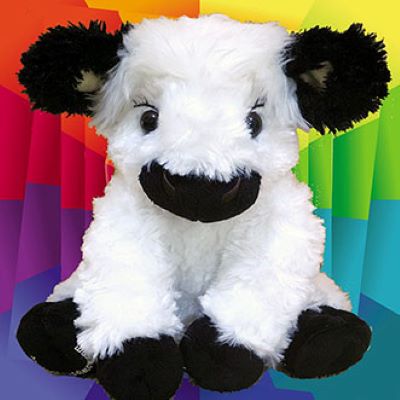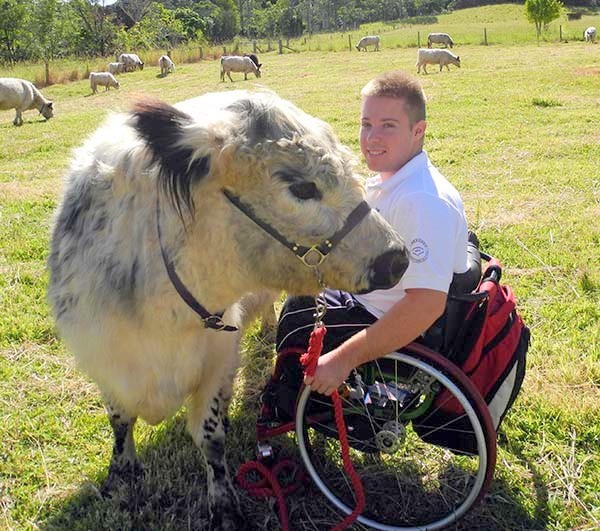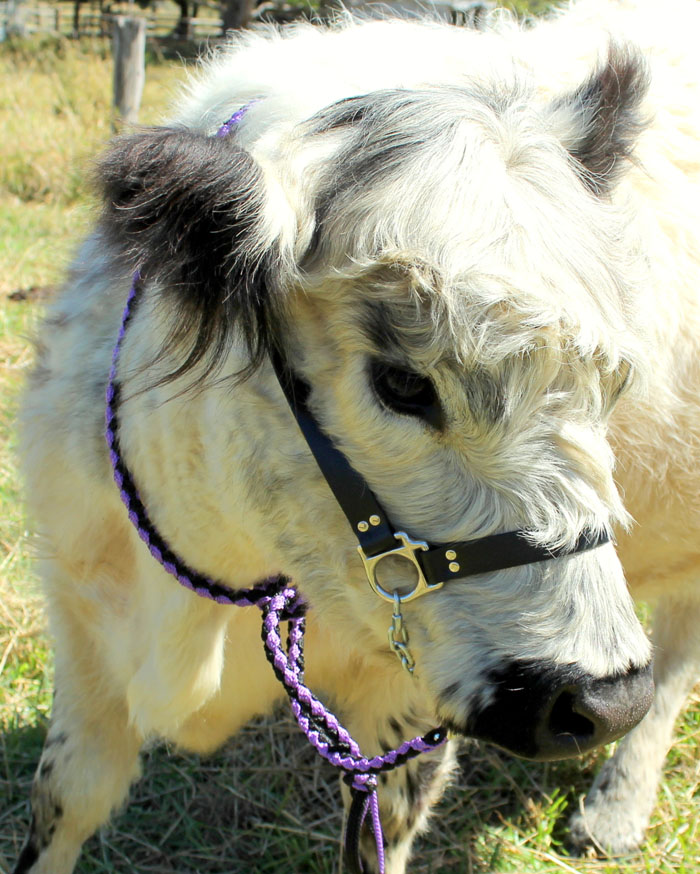Miniature Galloway Cattle - Black Coats
Miniature Galloway cattle with black coats are the most common of the Miniature Galloways.
They have a double coat of hair, consisting of a long, shaggy overcoat and a soft, thick undercoat. Providing excellent insulation in cold, bleak weather and reducing the amount of feed intake required to maintain body weight the black coat looks great and serves the Miniature Galloway well in most Australian climates.
Breeding Miniature Galloways with Black Coats
There are more Miniature Galloway cattle with black coats than there are dun or red coats. The black can be achieved by breeding with two Miniature Galloways with black coats. They can also be bred when a breeder is by using a black Miniature Galloway cow and a Miniature Galloway bull of another colour. It can also occur when breeders use a black Galloway bull with a Miniature Galloway cow of another colour.
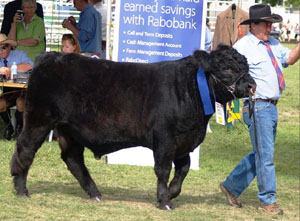
Gunadoo Yea George: Black Full Blood Miniature Galloway Bull bull in the show ring.
Miniature Galloways with Black Coats
Miniature Galloway cattle with black coats have all the good traits of the larger Galloway cattle with all the advantages of cattle that come in a 'smaller package'.
Galloways are one of the oldest naturally polled breeds, and therefore the characteristics that the Galloway breed can bring to your herd have been stabilised over many generations of breeding.
These characteristics include:
1. Fertility — Galloway bulls are very fertile at an early age. (Reports from Tasmania of one beef producer who turn out a 3 year old Hereford bull and an 18 month old Belted Galloway with 26 heifers. The Hereford was much bigger and the producer doubted if the Belted Galloway bull would have the opportunity to breed any of the heifers. Nine months later his opinion of the Belted Galloway bull changed. The first 24 calves born were by the Belted Galloway bull).
If you want your cows in calf – the Galloway is the bull for the job.
2. Ease of Calving — Research completed by the Clay Animal Research Centre, in Nebraska tested 11 breeds for their ability to give birth and rear their calf. The Galloways recorded the highest weaning percentage (95.5%) and the highest calf survival percentage (95.2%). The Galloways also had an outstandingly low incidence of calving difficulty (0.8%). The Galloway calf is very vigorous at birth which helps it to survive those crucial first few days of life.
There is no profit in a dead calf – make sure of your calving ease by using a Galloway bull.
3. Maternal Traits & Longevity — Galloway females are very protective of the calves and will produce a live viable calf well into their teens. They produce a high quality milk and will look after their calves in all conditions.
4. Non-Selective Grazers — Research in Europe has shown that Galloways will graze over the whole paddock which allows the grasses to be able to compete with the weeds. They have the ability to forage under sparse conditions and as a result can be finished on pasture with only pasture hay or silage as a supplement.
5. High Quality & High Yielding Carcasses — The typical Galloways carcass is well muscled, long and with optimum fat cover. Rarely does a Galloway cross have too much fat cover. Galloway crosses have been shown in feedlot trials to have the same marbling and growth rate as Angus crosses, but better yield and less back fat (external fat). Carcass competitions have shown that Galloway carcasses typically are high yielding, with figures often around 73%.
6. Produce High Quality Healthy Beef — In Canada, USA and Switzerland research has shown that beef which is extensively produced can be of great benefit in a healthy diet. Galloway beef raised under extensive conditions is rich in linoleic acid. The human body does not produce linoleic acid and therefore it must be included n our diet. Linoleic acid reduces the dangerous type of cholesterol (LDL), prevents thrombosis and therefore protects coronary vessels. Research by Dr Butson, Canada also has shown that Galloway beef has good levels of the essential fatty acids Omega 6 (linoleic acid) and Omega 3 (linolenic acid).
7. The Breed to Cross Breed — Galloway females are highly suited to joining with other breeds, with their easy-calving, good mothering and ability to do well in any conditions. A long-living, excellent F1 mother is the result of crossing a Galloway with other breeds – the genetic difference will add hybrid vigour and the crossbred female will be as robust, efficient and as mobile as her dam.
* The above traits are passed on at a very high degree to cross bred offspring.
Galloway bulls have the ability to produce an even line of calves – in colour, polledness and high quality carcasses from mixed lines of cows. The Galloway polling dominance in crossbreeding ensures 100% polled calves from horned females.
